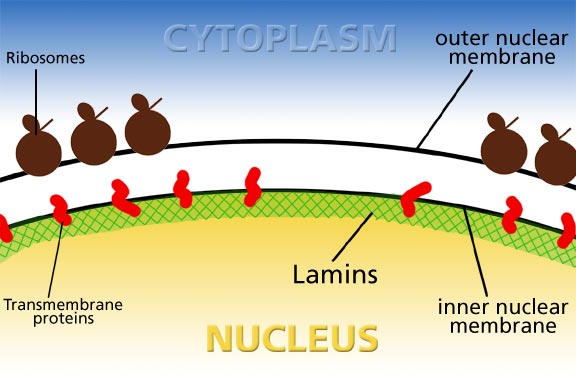| An increasing number of rare but devastating
diseases have been linked to the inner membrane of the nuclear envelope.
The inner membrane is lined by a structure referred to as the lamina. The
lamina, largely composed of proteins called lamins, is important for maintaining
the shape and size of the nucleus, and also contributes to the specialized
functions of different human cells. The lamina also contains transmembrane
proteins that dock at the lamins. When certain lamins and inner membrane
proteins are mutated, they cause muscle-wasting diseases such as congenital
muscular dystrophy, Limb-Girdle muscular dystrophy, and spinal muscular
atrophy, and several forms of the neurodegenerative Charcot-Marie-Tooth
disease. Illustration by Kevin Fung. |

